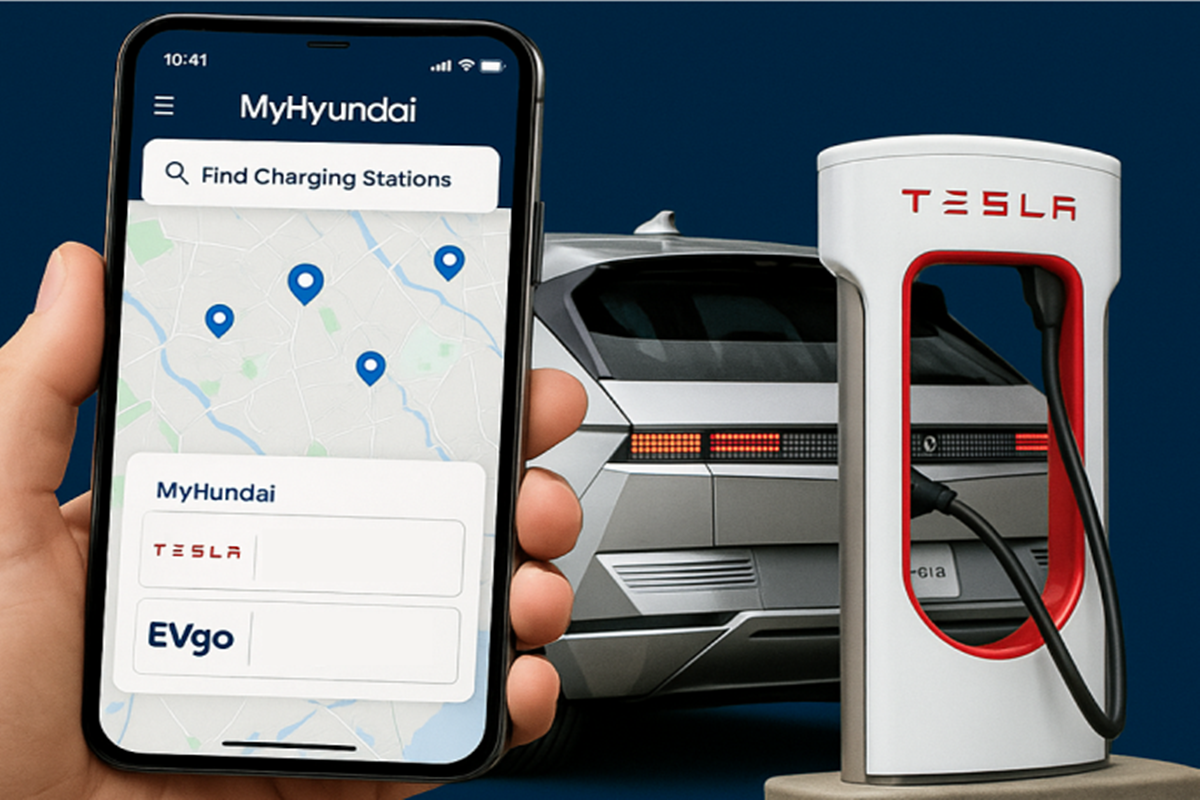
Hyundai Motor Company plans to improve electric vehicle (EV) charging in the U.S., drawing inspiration from Tesla. On Wednesday, the automaker introduced two key software updates to enhance the charging experience. Central to the changes, the MyHyundai app integrates with EV charging systems and Plug and Charge functionality launches.
The MyHyundai app will connect with major U.S. EV charging networks, including Tesla Superchargers, ChargePoint, EVGo, and Ionna. This integration simplifies the process, allowing users to find stations, plan routes, start charging, and make payments all within a single interface.
Hyundai will equip its 2025 IONIQ 5 and upcoming IONIQ 9 with Tesla’s North American Charging Standard (NACS) port, providing access to Tesla Superchargers nationwide. Owners of earlier models can use NACS-to-CCS adapters to access the network.
The introduction of Plug and Charge functionality marks a major advancement. This feature, popularized by Tesla, enables automatic authentication, payment, and charging initiation by simply plugging in the vehicle. Initially available at Tesla Superchargers, ChargePoint, and Ionna stations, it is expected to expand to other networks.
The MyHyundai app goes beyond basic charging functions, offering an intuitive user experience. Tapping Find Charging Stations on the home screen shows nearby stations, and during route planning, it suggests optimal charging points, sending them to the vehicle’s navigation. Users can easily find stations using filters for charger type, speed, and connector (NACS, CCS). The app also supports integrated payment systems with card registration.
These features are initially available for the IONIQ lineup, with plans to expand compatibility to more EV models, reflecting Hyundai’s commitment to enhancing the EV ownership experience across its entire electric range.
Hyundai’s latest update directly addresses the charging infrastructure issues in the North American EV market. By ensuring compatibility with Tesla’s long-established vertically integrated charging system, Hyundai aims to resolve the long-standing concerns over charging convenience.
The MyHyundai app-based integration strategy aligns with approaches adopted by Ford and GM. Following the opening of Tesla Superchargers, the North American charging market rapidly shifted toward the NACS standard. Hyundai’s swift response positions the company to compete with Tesla’s loyal customer base.
The implementation of Plug and Charge technology goes beyond convenience, addressing charging anxiety, a major barrier to EV adoption in the U.S. Hyundai’s approach to simplifying the charging experience could significantly boost EV sales and adoption.
These updates primarily target the U.S. market, highlighting global challenges faced by EV owners, including in South Korea. As Hyundai gains experience in streamlining charging processes internationally, similar improvements are expected in domestic markets, further accelerating the transition to electric mobility.
























